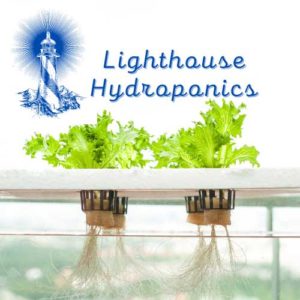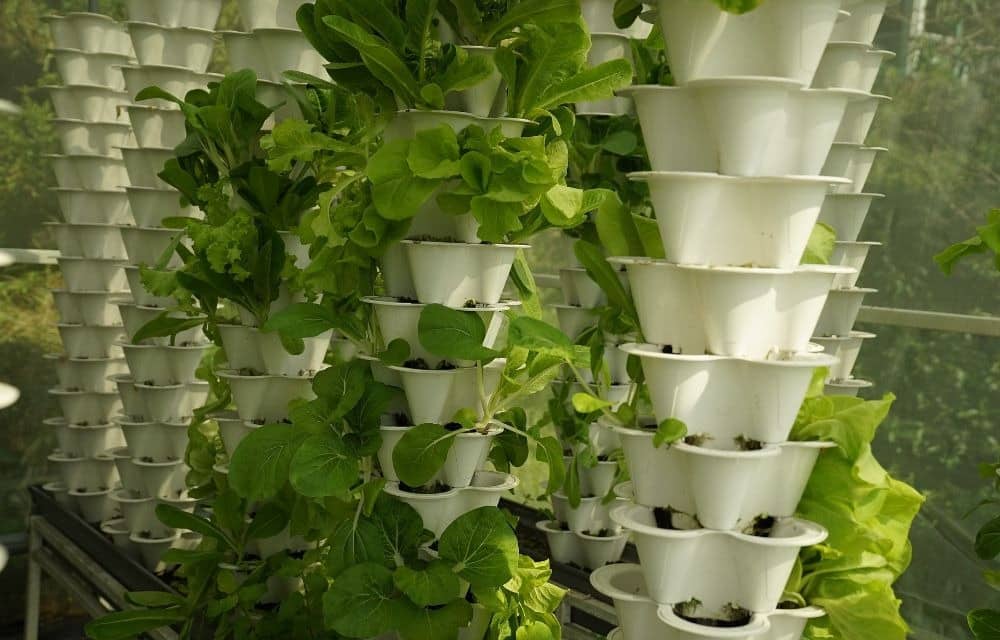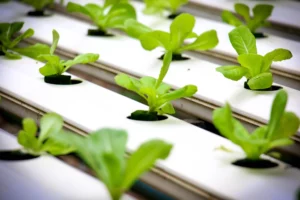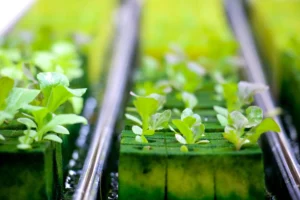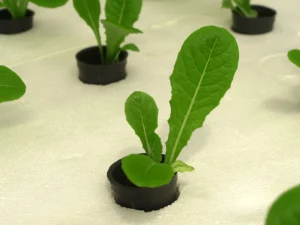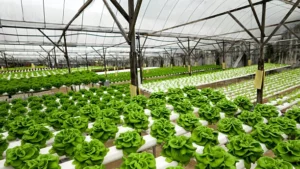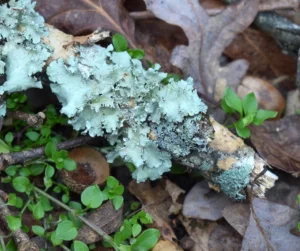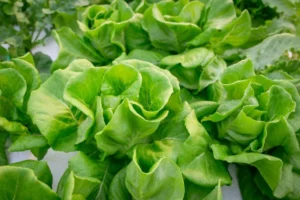When choosing the right size hydroponic net pots for your system, it’s important to first understand why you need specific-sized net pots in your system. If you’re new to hydroponics and want to grow plants indoors, you may not yet be aware of how much space you need to plan for before investing in a hydroponic setup. Losing even a few square inches of growing space can make a big difference in how well your plants grow and the final size of harvest they produce. As such, knowing the right size net pots for your system is an essential part of choosing the best greenhouse for your needs.
With that said, there are few things more frustrating than getting excited about starting up a new gardening project only to discover that you don’t have enough space or practical experience to get started with it as soon as you’d like. That’s why we’ve put together this detailed guide on how large a size pot is perfect for beginning indoor gardeners and novices alike who want to start small and build their expertise over time. From what sizes of grow tents are available on the market today, to which brands are worth considering, this article goes over everything you need to know about starting out with indoor gardening so that it doesn’t hold you back anymore when it comes time to expand your capabilities down the road.
What size net pots are ideal for beginning indoor gardeners?
As a beginner, it’s always best to start with the small stuff. This means that when you’re setting up your first DIY hydroponic system, it’s best to only choose a few net pots that are smaller than what you’ll likely need as you learn how to grow plants in your greenhouse.
The size of these first few plants is also important. You should choose varieties that are less demanding when it comes to light and still have some room for growth. For example, there are plenty of spinach seeds available at the seed store that will produce plants that can be easily grown in just a few squares on a 6-inch pot. These types of plants don’t need tons of light or space, so they make great candidates for beginning indoor gardeners and beginners who want to experience gardening without breaking the bank.
However, once you become more familiar with gardening, there’s no reason why you can’t use larger net pots for plant growth. Your initial purchase should never limit what size net pots you’ll be able to grow in later on down the road. If your budget allows for it, consider going bigger with your purchase now and save yourself from having to upgrade later on by using smaller net pots early on.
How large of a grow tent is too large for beginners?
Knowing the right size net pots for your system is an essential part of choosing the best greenhouse for your needs. There are many factors to consider when choosing the right size of grow tents, and it’s important to take them into account to make sure you choose one that fits your needs. Fortunately, there are a few things you can keep in mind as a beginner to help you determine if a particular size is too large or not.
The first thing you should think about is how much space you have for your plants or other growing equipment. If you have an area of at least 8 to 10 square feet available for plants, then any size tent should suffice as long as it has an appropriate amount of light and ventilation. Remember that the minimum size for a grow tent depends on what kind of growing space you have available, so if you only have 4 square feet available, then just go with a 6-foot-by-6-foot tent or smaller.
Next, think about whether or not you want to be able to move around inside of the grow tent without squishing your plants. If ease of moving around is important—especially if you will be taking care of more than one crop at once—then a smaller, more compact design may be better suited for beginning indoor gardeners who want multiple crops going simultaneously.
Finally, consider how many people will be able to fit inside the grow tent at once. As long as they’re not crowded together (in which
How large of a grow tent is too small for intermediate growers?
The size of the grow tent you choose to start with is one of the most important decisions you’ll make when choosing a greenhouse. A greenhouse allows your plants to grow without their root system being disturbed by other things such as direct sunlight and soil. Because of this, it’s important that your plants get enough room to grow while they are still small so that they don’t outgrow the space in which they are grown.
With that said, the size of your grow tent is determined by a few different factors. For example, if you have an indoor garden setup indoors and want to place it outdoors for a bit, a smaller grow tent might be perfect for this purpose. However, if you plan on keeping your greenhouse outside all year round or need it for large-scale production, you’ll need a larger footprint than what can be achieved with a small tent like this.
Additionally, if you typically live in warmer climates where there is plenty of sunlight year-round and don’t need shade from artificial lights during certain parts of the year, then you may only need a small-sized tent to start with. But if you live in Northern climates where there isn’t much daylight during certain seasons and plan on using artificial light across various parts of the day then you’ll likely want to go with something bigger than what we mentioned earlier.
When does the right size of a net pot become essential?
If you’re just beginning with hydroponics, you may not yet be aware of what size net pots are needed for your system. This is understandable, since the most common size of a net pot is the 3-gallon size. While this size is perfectly suitable for inexperienced gardeners who want to grow their first crops indoors, it leaves little space for future expansion if you decide to add more plants or spend more time experimenting with advanced growing methods. For this reason, you may want to consider investing in a larger net pot that can accommodate multiple grow tents or other equipment as your interest increases over time.
How to choose the right type of hydroponic net pot for your system
There are a few key factors to consider with choosing the right type of hydroponic net pot for your system. The first is what size you need and the second is what type of water reservoir you plan on using.
With regards to size, it’s important to know that greenhouse growers always recommend starting small and building up from there, so remember that this article is written for those who want to grow a small quantity of plants indoors to practice before expanding their overall operation. If you’re looking for bigger indoor garden needs, then be sure to check out our article on choosing the best greenhouse for your gardening needs.
When it comes to type, choose between a standard hydroponic net pot or a wicking hydroponic net pot. Both types of pots can be used in hydroponics setups but they serve different purposes. A standard hydroponic net pot is typically made of PVC plastic or aluminum and it’s designed to hold a fairly large volume of growing medium (usually around 1 gallon). This allows the plant roots plenty enough room to spread out throughout the growing medium as they grow into their pots and get stronger.
The wicking hydroponic net pot is typically made from polyester film with holes in it that allow nutrient-rich water (misting) through each time it sprays onto the growing medium below. This means that the plant roots only have access to oxygenated water as opposed to soil, which means that this type of
Don’t Forget to Add Humidity Source(s)
It’s important to remember that a hydroponic system will not work without some type of humidity source. In this case, there are many humidity sources available for indoor gardening, from the typical misting system to a fogger or even a humidifier. It’s also important to consider what type of plants you intend to grow in your greenhouse. If you plan on planting tomatoes or peppers, which need high levels of humidity, you may want to add a humidifier into your setup as well as an air conditioner or dehumidifier.
However, if you only want to grow herbs and flowers with low needs for humidity, it may be enough to simply use the ambient air in your greenhouse as the source of humidity. This will require less maintenance and upkeep than adding in additional humidity sources. For example, if you were growing mint in your greenhouse, you would need to avoid using a humidifier because mint needs very little moisture for optimal growth. If instead you had already added an ultraviolet light into your setup and have a low-pressure system installed with fans that exchange air at all times, the plants can easily thrive without the extra assistance from water vaporizers.
Chlorine-Free Watering Techniques
While it’s possible to use tap water (or even rainwater!) for your hydroponic garden, you may want to limit your use of tap water for two reasons: the chemical chlorine, and the fact that tap water may not be as clean as you might hope. When using tap water in place of distilled or RO/DI water in your hydroponic system, it is possible that your plants will develop chlorosis because they will have no way of dealing with the chlorine.
It’s also worth taking a look at whether or not there are any contaminants lurking in your tap water. If you’re on a well, there may be minerals and organic substances in the groundwater that could build up and introduce an imbalance in pH levels. If you’re unsure about how clean your tap water is, it’s best to use distilled or reverse osmosis (RO) filtered drinking water for hydroponics.
Conclusion
After learning how to make the most from your indoor garden, you’re ready to start growing! But how do you know when you’ve reached the perfect size for your net pots?
It’s so easy to grow plants in net pots that there are different sizes for different levels of experience. The type of hydroponic system you choose will determine when you should choose a larger or smaller net pot.
For beginners, the right size is a 10-15 gallon net pot. For intermediate growers, the right size is a 15-20 gallon net pot. When you’re ready to plant in a larger space, go with a 25-30 gallon net pot and when you’re ready to take your garden to the next level, go with a 40+ gallon net pot.
FAQ’s
How much growing space do I need to plan for before investing in a hydroponic setup?
The best size hydroponic net pots for your greenhouse or growing space will depend on a number of factors, including: how many plants you need to support , how much space you have to spare , and what size plant containers you already own . However, one general guideline is to choose a pot that is no more than three times the diameter of the plant container you’re using. For example, if you’re using a 12-inch plant container, opt for a 6-inch net pot or smaller.
What are the benefits of choosing the right size net pots for my system?
Before choosing the right size hydroponic net pots for your system, it’s important to first understand why you need specific-sized net pots in your system. If you’re new to hydroponics and want to grow plants indoors, you may not yet be aware of how much space you need to plan for before investing in a hydroponic setup. Losing even a few square inches of growing space can make a big difference in how well your plants grow and the final size of harvest they produce. As such, knowing the right size net pots for your system is an essential part of choosing the best greenhouse for your needs.
When choosing the right size hydroponic net pots for your system, be sure to consider the following factors:
1. How much space do you have available? Most hydroponic systems require at least 2 square feet of growing space per plant. With this amount of growing space, you can expect to yield between one and two pounds of fresh produce per plant. If you have more or less space available, select a smaller or larger size pot accordingly.
2. What type of plant do you plan on growing? Different plants require different amounts of growing space, so be sure to choose a size pot that accommodates your particular crop. For example, coco fiber yields denser crops than standard coco coir, so it may require slightly more room (or coco fiber strands) than standard coir .
3. How much food will you be preparing at one time? The amount of food that can be grown at once also affects the requirements for a specific-sized net pot. For example, 10-gallon long plant pots are commonly used for culinary herbs because they can accommodate maximum yields between harvest cycles. On the other hand, smaller 9-inch or 8-inch round containers allow individual plants to be grown in closer proximity (and therefore harvested more quickly).
How do I choose the right size net pots for my system?
Don’t be intimidated by the term “hydroponics,” which refers to plants grown in water—hydro means water. Hydroponics is an environmentally sound, sustainable way to grow plants indoors or outdoors without soil.
A hydroponic system consists of one or more large tanks (called reservoirs) placed in a sunny location and connected to grow chambers or hothouses using tubes and drippers, trays, or other hydroponic vegetable gardening containers.
In hydroponics, there is no soil to cultivate, so it’s important to be sure of your plant requirements before choosing a size of net pots. Try to determine what the plant will be used for (vegetables, flowers), its required growing environment (sun or shade), and the space available to grow (small windowill or large backyard). Then choose the largest sized net pot that will allow for the required growing space and still have plenty of room for roots to develop.
